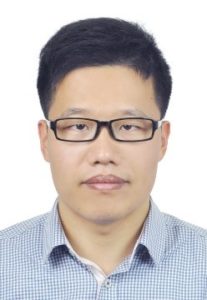 Prof. Liwu Zhang joined the Department of Environmental Science and Engineering at Fudan University in November 2014. Prior to his faculty appointment, he did his postdoctoral work under the supervision of Prof. Jeremy J. Baumberg (FRS) at the Nanophotonics Centre in Cavendish Laboratory and collaborated with Dr. Erwin Reisner from the Department of Chemistry at University of Cambridge. Before that, he was an Alexander von Humboldt Research Fellow under the supervision of Prof. Detlef Bahnemann in the Hannover University. He received a PhD in Chemistry from Tsinghua University under the supervision of Prof. Yongfa Zhu. He is a recipient of the Marie Curie Intra-European Research Fellow award. He has over a decade of experience in environmental chemistry and a strong background in environmental nanotechnology and has published more than 50 highly cited papers in this field. His work have been cited for >3000 times, and he has an h-index of 25.
Prof. Liwu Zhang joined the Department of Environmental Science and Engineering at Fudan University in November 2014. Prior to his faculty appointment, he did his postdoctoral work under the supervision of Prof. Jeremy J. Baumberg (FRS) at the Nanophotonics Centre in Cavendish Laboratory and collaborated with Dr. Erwin Reisner from the Department of Chemistry at University of Cambridge. Before that, he was an Alexander von Humboldt Research Fellow under the supervision of Prof. Detlef Bahnemann in the Hannover University. He received a PhD in Chemistry from Tsinghua University under the supervision of Prof. Yongfa Zhu. He is a recipient of the Marie Curie Intra-European Research Fellow award. He has over a decade of experience in environmental chemistry and a strong background in environmental nanotechnology and has published more than 50 highly cited papers in this field. His work have been cited for >3000 times, and he has an h-index of 25.
Read his Emerging Investigators series article: ‘Heterogeneous reactions of sulfur dioxide on mineral dust nanoparticles: from single component to mixed components” and find out more about him in the interview below:
Your recent Emerging Investigator Series paper focuses on heterogeneous reactions of sulfur dioxide on mineral dust nanoparticles. How has your research evolved from your first article to this most recent article?
My first article focused on fabricating nanoparticles for photocatalytic pollutants decomposition. Before I joined Fudan University in 2014, most of my research work were related to photocatalysis for environment and energy application. In 2014, I went back from UK to China and begun my independent research career, it was also the time that haze problem was very serious in China and attracting wide public attention. I am very curious about the chemistry process during the formation of particulate matters (PM2.5) in the atmosphere. The heterogeneous reaction plays an important role in the formation and growth of PM2.5. Therefore, I started my research in this field, as reported in this Emerging Investigator Series paper.
What aspect of your work are you most excited about at the moment?
Find the reason and make the sky blue again in China.
In your opinion, what is the most important environmental implication of heterogeneous reactions of sulfur dioxide on mineral dust nanoparticles?
Formation of sulfate aerosols through heterogeneous conversion of SO2 is of great concern worldwide; however, the detailed mechanism is still not comprehensively understood. Particles in haze are complex mixtures comprising various species, and limited attention has been paid to the heterogeneous oxidation of SO2 on multi-composition aerosols up to now. This work could help understand the adsorption of SO2 on multicomposition aerosols and provide important parameters for atmospheric chemistry models.
What do you find most challenging about your research?
Sensitive in situ techniques for the study of heterogeneous reaction.
In which upcoming conferences or events may our readers meet you?
Conference on Environmental Science or Environmental nanotechnology.
How do you spend your spare time?
Play with my 3 years old daughter and 10 months old son.
Which profession would you choose if you were not a scientist?
Electronic engineer.
Can you share one piece of career-related advice or wisdom with other early career scientists?
Stay hungry, stay foolish.










